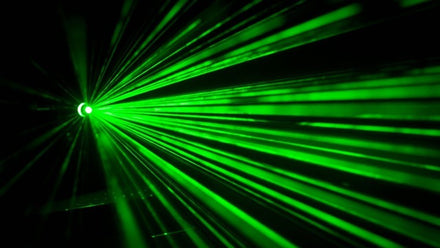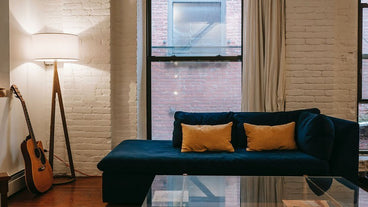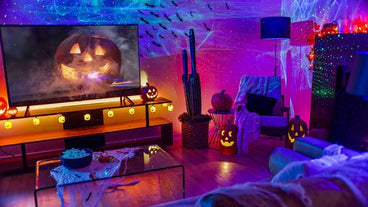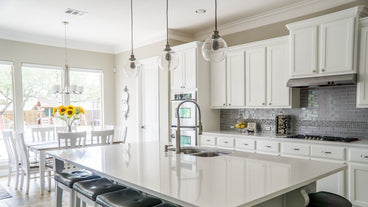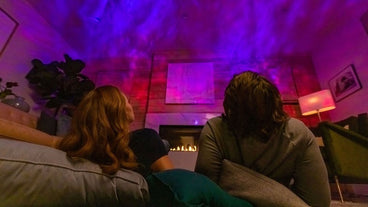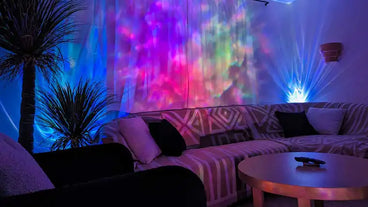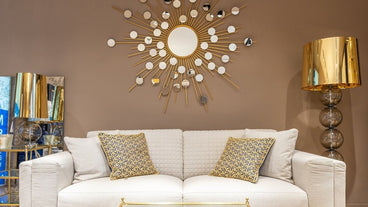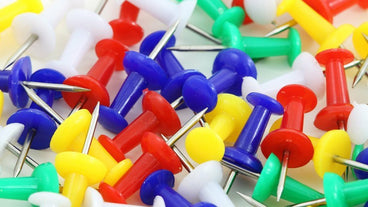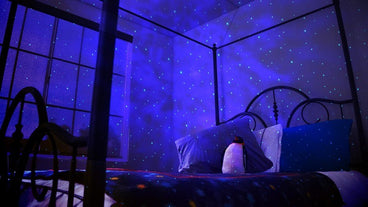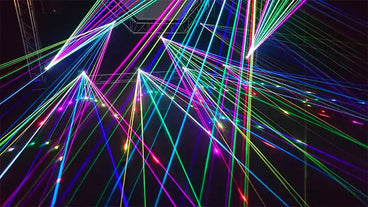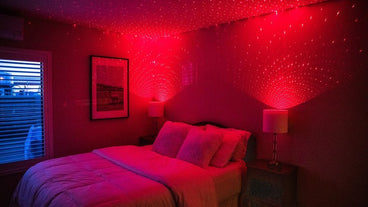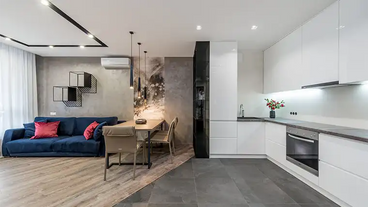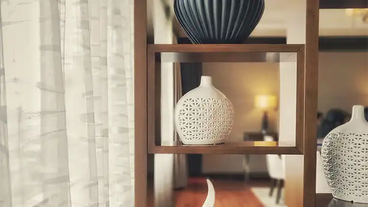If you want to light up the night (or day) in unique and memorable colors that depart from your typical off-whites and yellows, you have two main options: lasers and LEDs. That said, when you think of LEDs, you might think of the energy-efficient bulbs commonly used in standard ceiling fixtures and floor lamps. For decorative lighting, there’s a whole different world of LEDs available, not to mention lasers like you’ve never seen before. Read on to learn about how LEDs and lasers differ and to help you choose which is best for your setup.

What are LEDs?
The abbreviation LED stands for “light-emitting diode,” a type of small light source. An LED light contains hundreds or even thousands of these diodes, and when an electrical current passes through them, they emit light. Today’s LEDs can produce light of varying colors, including the primary colors red, green, and blue (RGB). Many color combinations can be produced by using specialized light blending options, along with the ability to control the brightness of each LED color.
LEDs are commonly found as bulbs that can be installed into any fixture. However, there are many types of outdoor and indoor fixtures featuring LEDs that are built right in. Importantly, some fixtures with LEDs in them, such as outdoor stake lights or strip lights, cannot be repaired if one or a few of the diodes burn out. This could diminish the brightness over time.
Benefits and drawbacks of LEDs
Among the benefits of using LEDs are:
- They’re softer. If you want your space to bask in a soft glow – which may be better based on the mood you’re seeking – you might have better luck with LEDs. Softer lighting may prove better for your needs if you’re going for relaxation instead of an energizing vibe.
- They can help draw attention to a singular area. If you’ve ever seen a couple walk down the aisle outdoors at a nighttime wedding, you’ve probably witnessed powerful LEDs in action. At home, the same type of spotlight setup can be used to attract focus to a painting or statue in the living room or a fountain or landscaped tree in the backyard.
- They can be more affordable. No matter where you encounter them, the LEDs’ calling card is energy efficiency, a characteristic they share with laser fixtures of similar types. Additionally, since LEDs are very common in everyday lighting applications, their cost has decreased overall, making it less expensive to outfit your home.

Of course, there are also reasons you might not want to use LEDs and may want to go for lasers instead. Those reasons include:
- Less impactful lighting. LEDs softly illuminate a room or light a single area. These lights can’t quite achieve the eye-catching patterns that lasers spread throughout your room or event space.
- Brightness and focus loss. There’s a reason LEDs are great for drawing attention to singular areas: They lose brightness and focus over long distances, resulting in a blobby “cheese puff” effect. Lasers don’t have this issue at long distances, which is part of why you may have seen lasers blowing up on TikTok lately!
What are laser lights?
These types of lights use lasers instead of LEDs for illumination. You can find lasers in bulb, portable, or projector varieties such as laser projectors and Christmas tree toppers. No matter the laser light type you use, you’ll quickly notice that lasers are uniquely unforgettable and entrancing, whether you’re enjoying them alone or with guests.
The laser beams in these bulbs emit coherent light, whereas LEDs emit incoherent light. This might sound like scientific jargon, but it matters for proper lighting setup. Incoherent light explains the “cheese-puff” effect we mentioned earlier when discussing LEDs, whereas coherent light largely explains many of laser’s advantages over LEDs.
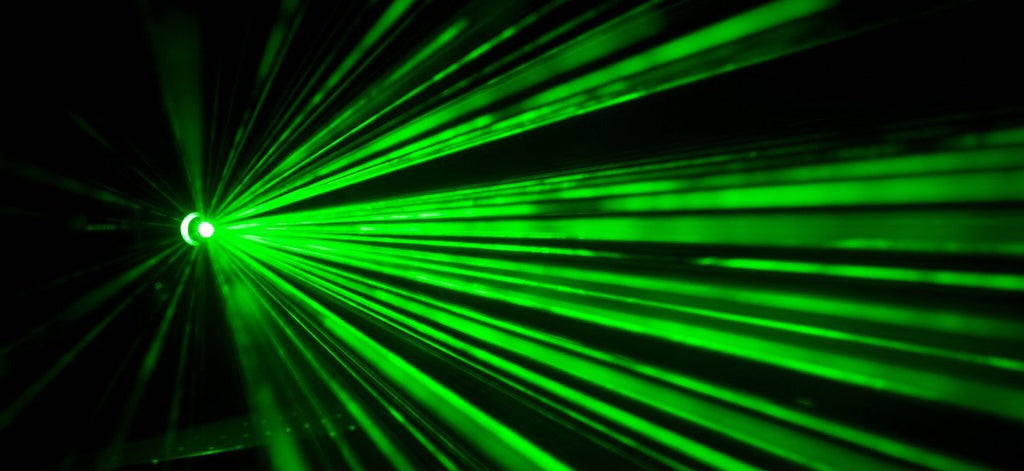
Benefits and drawbacks of lasers
You might prefer lasers to LED since:
- They create a dazzling atmosphere. Lasers can emit one-of-a-kind patterns such as a “starry sky” effect that can’t be achieved when using LEDs. That’s for two reasons: One, in the coherent light that lasers generate, all light waves travel in exactly the same direction, which translates to no brightness or focus loss. Two, since this light travels in a narrow line, it can easily be diffracted into thousands of additional laser beams that project tiny, colorful dots into your space (hence that breathtaking starry sky effect you get with BlissLights laser projectors).
- They’re super eye-catching. Chances are that when you enter most indoor spaces, you’re expecting standard off-white or softer yellow hues. But what if you walked into a room and saw a space engulfed in shimmering blue skies and vibrant green auroras? In that case, all your attention might be on the lights. That’s precisely the point: lasers are especially eye-catching.

- They may be more energy-efficient. Since coherent light means no brightness or focus loss, you don’t have to use as much energy to illuminate your space. That’s a big reason why lasers are a bit more energy-efficient than their already energy-savvy LED counterparts.
- They can be more expensive. As we mentioned earlier, LEDs may be your more affordable option since their omnipresence has driven down their price. Not that lasers are unreasonably expensive, but their LED counterparts often cost less.
- Lasers have a precise purpose. Lasers aren’t the right choice for every lit task. Turn to lasers for decoration or projection, but daily tasks such as reading or doing crafts may benefit better from LEDs.
What's the difference between lasers and LEDs?
You now know plenty about lasers and LEDs’ advantages and disadvantages, so let’s talk more about some major differences between these light types. Those include:
- Coherence. LEDs produce incoherent light, hence the “cheese-puff” effect and the low focus and brightness over distance. Lasers produce coherent light, so focus and brightness don’t decrease with distance.

- Colors. A single laser beam will emit one color of light, whereas LEDs can display thousands of colors. That said, lasers can emit more than one color if there are different wavelength lasers in the light. Plus, the one color a laser beam emits will be brighter and more focused than the thousands of colors possible with LEDs.
- Functions. LEDs are monochrome, but you have thousands of colors to choose from, which can be adjusted with an app connected via Bluetooth® or WiFi. Some LEDs also include color-changing options or appearance settings like flickering or flashing. Lasers often come in just one or two colors, but you can use them to generate patterns or even images, such as a dancing Santa or cheerful snowman, thanks to their coherence.
- Power levels. LEDs usually have higher power levels than lasers. For example, here at BlissBulbs, our BlissBulbs use at most 2W of electrical power, whereas a typical LED light bulb might use up to 13.5W of electrical power. Additionally, lasers have a higher output of energy to light (instead of to heat) than do LEDs.
How to choose whether lasers or LEDs are right for you
Still wondering whether LEDs or lasers are better for you? That’s understandable – both clearly have their advantages and disadvantages. Try looking at this a different way: What do you need for your dream lighting setup? Ask yourself these questions before making your purchase:
- What’s your budget? If you don’t have much to spend or if you’re changing a significant amount of fixtures and bulbs at once, LEDs might be best. If money isn’t a concern, you might prefer the dazzling effects and brighter, more focused light of lasers.
- Where do you need lighting? Since LEDs aren’t as visible over longer distances, you might prefer lasers for any setting – indoors or outdoors – in which you’re projecting light onto surfaces from more than a few feet away.
- Why do you need lighting? If it’s party time, consider that a starry sky effect may excite your guests more than the pattern-less monochromes of LEDs. If you’re hosting a smaller gathering such as a holiday dinner, LEDs might be better for mood lighting that won’t distract your guests from the ceremonies at hand.
- What lighting effects do you want? For monochrome flashing or flickering in almost any color you desire (or smooth fading in and out of several colors), try LEDs. For starry skies, galaxy effects, holiday image projections, or ambient aurora lighting, lasers will serve you better. LEDs can’t emit patterned or multi-color light – and, as you now know, that’s not the only way lasers stand out.


Sky Lite Evolve: Smart Galaxy Projector
$49.99$39.99
The latest evolution in smart galaxy lighting.
Choose BlissLights for a standout show
For a lighting show that neither you nor any guests will forget, choose BlissLights. Our lasers create striking patterns you likely don’t see every day, and our reds, greens, and blues can be relaxing, stimulating, or just plain novel. They’re also more energy-efficient, brighter, and focused than their LED counterparts. And here at BlissLights, we have plenty of laser centric options for whatever purpose you need – browse our shop to see for yourself!
You may also enjoy these...
Discover fun and unique lighting ideas on the BlissLights Lighting Blog!
